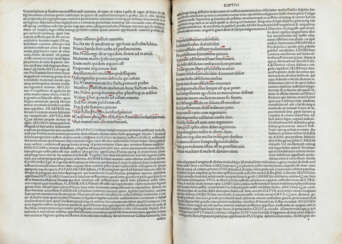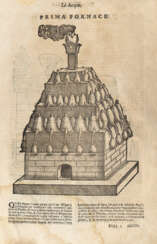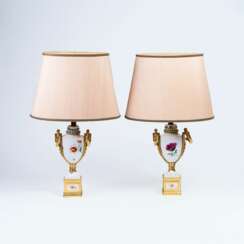marco d&

Marco Zanuso was a leading Italian Modernist architect and designer.


Vincenzo Campi was a notable painter of the 16th century, widely recognized for his unique style that combined traditional subjects with everyday life. Campi's journey in the world of art was influenced by his family background, as he trained under his brother Giulio and was part of a family of Italian painters known for their contributions to Mannerist painting.
Vincenzo Campi's paintings stood out for their vivid depictions of market scenes and kitchen tableaux, focusing on everyday objects and food with an extraordinary level of realism. This approach was quite innovative for his time. His works like "Pescivendoli" (The Fishmongers, 1579) and "The Ricotta Eaters" (1580) are emblematic of his style, combining elements of still life and genre painting. In "The Ricotta Eaters," for instance, Campi artistically weaves together themes of food and sensuality, presenting a scene that is both a hymn to life and pleasure and a subtle commentary on social classes and morality.
Vincenzo Campi's paintings were not just mere representations of daily life; they often carried deeper social and cultural meanings. For instance, in his depiction of the lower working classes in "Fishmongers," he illustrated contemporary beliefs regarding food's appropriateness based on social hierarchy. The paintings of commoners consuming foods like beans, dark bread, and cheese, as shown in "The Ricotta Eaters," reflected the societal norms of the time regarding class and diet.
Vincenzo Campi's work did not only portray the peasants in a crude or humorous light, but also carried a sophisticated blend of comedy and criticism, reflecting a deeper understanding of the human condition and social structures of his time.
Campi's style and themes influenced other artists in Cremona and contributed to the development of genre painting in northern Italy. His work, in some ways, served as a precursor to Caravaggio’s realism that emerged in the subsequent decade.
For collectors and connoisseurs of art and antiques, Vincenzo Campi's paintings offer a unique window into the societal and cultural aspects of 16th-century Italy, blending everyday life with deeper social commentaries. His work continues to be an important part of the conversation in the history of art.
To stay updated on the latest insights and collections of Vincenzo Campi's works, consider subscribing to our updates. This service will ensure you are informed about new sales, exhibitions, and auction events related to this influential Italian artist.










Piero Dorazio was an Italian painter. His work was related to color field painting, lyrical abstraction and other forms of abstract art.


Pablo Ruiz Picasso, a Spanish artist renowned for his revolutionary contributions to the 20th-century art scene, is a figure that resonates profoundly with collectors and art experts. His unique blend of talents in painting, sculpture, printmaking, and ceramic art, infused with his time in France, positioned him as a pivotal character in modern art history.
Picasso's artistic journey was marked by distinct periods, each showcasing his evolving style and genius. His early years were characterized by the Blue Period (1901-1904), followed by the Rose Period (1904-1906), and then the African-influenced Period (1907-1909). Picasso's name is synonymous with Cubism, a movement he co-founded, which significantly altered artistic perspectives and methods. Works like "Les Demoiselles d'Avignon" (1907) and "Guernica" (1937) are emblematic of his cubist legacy, the latter being a poignant anti-war statement that remains influential.
His later years saw a return to more traditional styles, with neoclassical and surrealist influences becoming evident. Works from these phases reflect a deep engagement with mythological themes, as seen in "Faun with Stars" (1955), symbolizing his late-life romance with Jacqueline Roque, his second wife.
Picasso's prolific output and innovative spirit made him a legend in his own time, a status that only grew after his death. His works, housed in major museums and private collections worldwide, continue to captivate and inspire.
As a collector or expert in art and antiques, staying informed about Picasso's works, their auction events, and sales is essential. To stay updated on the latest developments and opportunities related to Pablo Picasso, sign up for our specialized updates. Rest assured, this subscription will focus solely on new product sales and auction events pertaining to Picasso's art, ensuring that you receive only the most relevant and valuable information.
.jpg)
Max Ernst was a pivotal figure in the 20th-century art world, whose work transcended the boundaries of nationality and genre to leave an indelible mark on culture, art, sculpture, and painting. Born in Germany on April 2, 1891, and later becoming a naturalized American and French citizen, Ernst's career was a testament to his relentless innovation and creativity. Known primarily as an artist and painter, Ernst was a founding member of the Dada movement in Cologne before becoming a major proponent of Surrealism in Paris. His early encounters with the works of Pablo Picasso, Vincent van Gogh, and Paul Gauguin at the Sonderbund exhibition in 1912 deeply influenced his artistic direction, infusing it with elements of Cubism and Expressionism. Despite his lack of formal artistic training, Ernst's experimentation with techniques such as collage and frottage showcased his unique ability to blend the absurd with the sublime, making him a central figure in the artistic avant-garde of his time.
Ernst's work is notable for its exploration of the unconscious, using dreamlike imagery and symbolic figures to critique societal norms and delve into the chaos of the human psyche. His experiences in World War I profoundly impacted his worldview, leading to a deep skepticism of Western culture and an enduring search for meaning through art. This is evident in works such as "Europe After the Rain II," which reflects the devastation of war and "The Fireside Angel," inspired by the political turmoil of the Spanish Civil War, showcasing his ability to address contemporary issues through a surreal lens.
Ernst's contributions to art are preserved in major museums and galleries worldwide, including the Tate in the United Kingdom and the Museum of Modern Art in New York. His sculptures, paintings, and collages continue to be celebrated for their innovative techniques and imaginative scope, marking him as a revolutionary figure in modern art. Among his most significant works are "Ubu Imperator," "The Elephant Celebes," and "The Virgin Spanking the Christ Child before Three Witnesses," each reflecting his mastery over a diversity of mediums and themes.
For collectors and experts in art and antiques, Max Ernst remains a symbol of artistic freedom and exploration. His ability to navigate through various artistic movements while maintaining a distinct, innovative voice is a testament to his enduring legacy in the art world. To stay updated on new product sales and auction events related to Max Ernst, signing up for updates is a valuable opportunity for those deeply invested in the nuances of modern and surreal art.

Alberto Giacometti was a Swiss sculptor, painter, draftsman, and printmaker, renowned for his distinctive elongated sculptures of solitary figures. Born in Borgonovo, Switzerland, in 1901, into a family of artists, Giacometti's talent was evident from an early age, encouraged by his father, Giovanni, a post-Impressionist painter, and his godfather, Cuno Amiet, a Fauvist painter. Moving to Paris in 1922 to study under the sculptor Antoine Bourdelle, Giacometti became a pivotal figure in Surrealism before focusing intensely on the human form, leading to his signature style of thin, elongated figures that evoke feelings of solitude and existential dread.
Giacometti's work spans several decades and various phases, including his early involvement with Surrealism and his later, more recognized existential and figurative sculptures. Notably, his sculptures, such as "Walking Man I" and "The Palace at 4 a.m.," reflect his unique view of reality and his relentless pursuit to capture the human essence. His approach was influenced by his associations with prominent figures of the art world, including Miró and Picasso, and intellectuals like Jean-Paul Sartre.
Despite facing challenges, including periods of self-doubt and the physical toll on his health, Giacometti's legacy as a master sculptor and artist remains influential. His works are celebrated worldwide and featured in major museums, such as the Museum of Modern Art in New York and the Tate Gallery in London, testament to his enduring impact on the art world.
Collectors and experts in art and antiques continue to revere Giacometti's work for its emotional depth and unique aesthetic. For those interested in the pioneering spirit of modern sculpture, Alberto Giacometti's oeuvre offers a profound exploration of the human condition and the artist's relentless pursuit of reality through art.
To stay updated on sales and auction events related to Alberto Giacometti's work, sign up for updates. This subscription is an excellent opportunity for collectors and enthusiasts to remain informed about new discoveries and opportunities related to Giacometti's enduring legacy.


Louis Marcoussis (Ludwig Casimir Ladislas Markus) was a painter and engraver of Polish origin who lived in Paris for much of his life and became a French citizen.















![[BINDING] - CICERONE, Marco Tullio (106 A.C.-43 A.C.) - Epistolarum volumen primum, quod est librorum XVI. Strasbourg: Iosias Rihelius, 1579.](/assets/image/picture_1242093/2b7bd/ubwrsrt56tvscs23af83okaoojrmoih54tutrhouanqyarwllumadxyyvpi2zyfo1608650265jpg__fix_374_244.jpeg)
![[BINDING] - CICERONE, Marco Tullio (106 A.C.-43 A.C.) - Epistolarum volumen primum, quod est librorum XVI. Strasbourg: Iosias Rihelius, 1579.](https://veryimportantlot.com/assets/image/picture_1242093/2b7bd/ubwrsrt56tvscs23af83okaoojrmoih54tutrhouanqyarwllumadxyyvpi2zyfo1608650265jpg__fix_374_244.jpeg)
![[RISORGIMENTO] - Lotto di due rari giornali Veneziani: Sior Antonio Rioba. Venezia: Giustinian, 1848 [E:] San Marco, giornale politico. Venezia: Canal, Piermartini, 1848-49.](/assets/image/picture_1242208/f4dab/b3-vzfbjo3xtx87bsing1avbjyd4dasrkdojesngksvbyb00onl5xx9i1h3vruos1608650265jpg__fix_374_244.jpeg)
![[RISORGIMENTO] - Lotto di due rari giornali Veneziani: Sior Antonio Rioba. Venezia: Giustinian, 1848 [E:] San Marco, giornale politico. Venezia: Canal, Piermartini, 1848-49.](https://veryimportantlot.com/assets/image/picture_1242208/f4dab/b3-vzfbjo3xtx87bsing1avbjyd4dasrkdojesngksvbyb00onl5xx9i1h3vruos1608650265jpg__fix_374_244.jpeg)
![MORO, Marco (1817-1855) - Venezia monumentale pittoresca.. parte prima: I Palazzi [Venezia: Giuseppe Kier, 1866] - Venezia monumentale e pittoresca.. parte seconda: Le Chiese. [Venezia: Giuseppe Kier, 1863, ma in copertina 1866).](/assets/image/picture_1242399/aff2e/tumt9ovvxoiufvmemq9ubxc5bwgkuuz9dmb2ilszr7aploxoqsa9upov3v96w28g1608651686jpg__fix_374_244.jpeg)
![MORO, Marco (1817-1855) - Venezia monumentale pittoresca.. parte prima: I Palazzi [Venezia: Giuseppe Kier, 1866] - Venezia monumentale e pittoresca.. parte seconda: Le Chiese. [Venezia: Giuseppe Kier, 1863, ma in copertina 1866).](https://veryimportantlot.com/assets/image/picture_1242399/aff2e/tumt9ovvxoiufvmemq9ubxc5bwgkuuz9dmb2ilszr7aploxoqsa9upov3v96w28g1608651686jpg__fix_374_244.jpeg)





![[BINDING] - CICERONE, Marco Tullio](/assets/image/picture_942441/4f006/ol6q0pz7iwjjpuu6flgnqnvgi5nbj8vrp9uxezg40kl9khxr4gnznl62vvlht1596201881jpg__fix_374_244.jpeg)
![[BINDING] - CICERONE, Marco Tullio](https://veryimportantlot.com/assets/image/picture_942441/4f006/ol6q0pz7iwjjpuu6flgnqnvgi5nbj8vrp9uxezg40kl9khxr4gnznl62vvlht1596201881jpg__fix_374_244.jpeg)





































